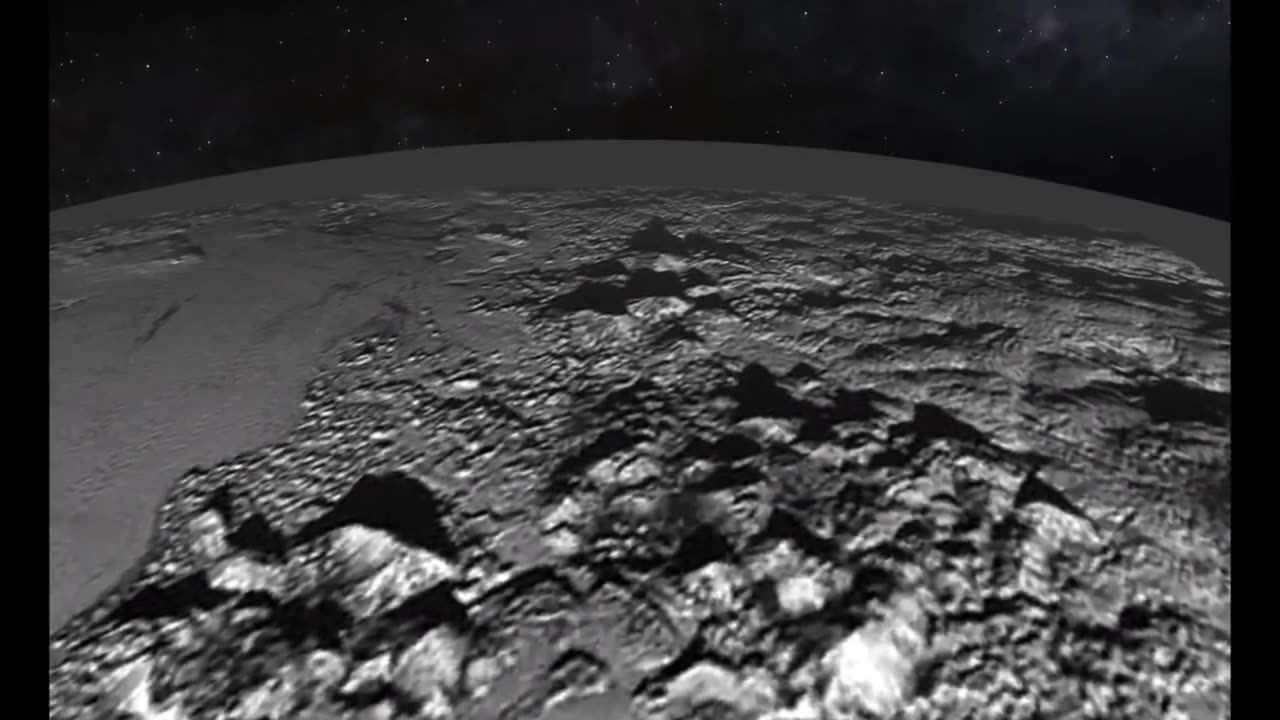Premium Only Content

pluto mountains
Pluto is a special type of celestial body located in our solar system. It is classified as a dwarf planet, a designation it received after being initially considered a regular planet. Discovered in 1930 by astronomer Clyde Tombaugh, Pluto completes one orbit around the Sun in approximately 248.09 Earth years. This means that one year on Pluto is equivalent to about 248.09 Earth years.
Pluto is relatively small in size, and its atmosphere is primarily composed of nitrogen. The planet has a moon called Charon, which orbits closely around it. The gravitational interaction between Pluto and Charon influences their orbits, causing them to exhibit a unique dance in space.
The color of Pluto is a mix of red and brown, and its surface appears cold and pristine. Similar to our Moon, Pluto's surface displays craters and other distinctive features.
After its discovery, Pluto was initially considered the ninth planet in our solar system. However, in 2006, the International Astronomical Union (IAU) reclassified it as a dwarf planet. This designation indicates that Pluto is smaller in size and has cleared most other objects from its orbital path. Ongoing research, particularly through NASA's New Horizons mission, which passed by Pluto in 2015, continues to provide new insights into this distant celestial body.
Pluto is a special type of celestial body located in our solar system. It is classified as a dwarf planet, a designation it received after being initially considered a regular planet. Discovered in 1930 by astronomer Clyde Tombaugh, Pluto completes one orbit around the Sun in approximately 248.09 Earth years. This means that one year on Pluto is equivalent to about 248.09 Earth years.
Pluto is relatively small in size, and its atmosphere is primarily composed of nitrogen. The planet has a moon called Charon, which orbits closely around it. The gravitational interaction between Pluto and Charon influences their orbits, causing them to exhibit a unique dance in space.
The color of Pluto is a mix of red and brown, and its surface appears cold and pristine. Similar to our Moon, Pluto's surface displays craters and other distinctive features.
After its discovery, Pluto was initially considered the ninth planet in our solar system. However, in 2006, the International Astronomical Union (IAU) reclassified it as a dwarf planet. This designation indicates that Pluto is smaller in size and has cleared most other objects from its orbital path. Ongoing research, particularly through NASA's New Horizons mission, which passed by Pluto in 2015, continues to provide new insights into this distant celestial body.
-
 LIVE
LIVE
Alex Zedra
3 hours agoLIVE! Chill stream before Thanksgiving!
1,607 watching -
 LIVE
LIVE
Pepkilla
5 hours agoDouble XP Zombies and Warzone ~
1,073 watching -
 0:46
0:46
Dr Disrespect
2 days agoIt's not just a stream... it's an experience
467K2.79K -
 1:28:27
1:28:27
Kim Iversen
1 day agoBOMBSHELL: Secret British Military Plot to Prolong the Ukraine War And Take Down The Grayzone
77.3K50 -
 11:54
11:54
Professor Nez
4 hours ago🚨CHILLING REVELATION: Tucker Carlson Reveals Dems NEXT PLAN to STOP Trump!
38.5K24 -
 6:51
6:51
Colion Noir
4 hours agoI have Something To Say To Gun Owners
22.7K15 -
 1:18:24
1:18:24
Glenn Greenwald
8 hours agoLiberals Encourage Family & Friends To Separate Over Political Disputes; Segment Debut Of System Pupdate: Profiles Of Rescued Dogs | SYSTEM UPDATE #373
83.5K136 -
 1:24:53
1:24:53
Flyover Conservatives
23 hours agoMarketing Madness or Manipulation? The War on Western Identity - Alex Newman; Economic Update - Dr. Kirk Elliott | FOC Show
25.2K1 -
 1:15:05
1:15:05
PMG
23 hours ago $3.75 earned"Big Pharma EXPOSED: The HIDDEN Cures They Tried to Bury"
21.7K4 -
 LIVE
LIVE
Tundra Gaming Live
5 hours ago $1.43 earnedThe Worlds Okayest War Thunder Stream
264 watching